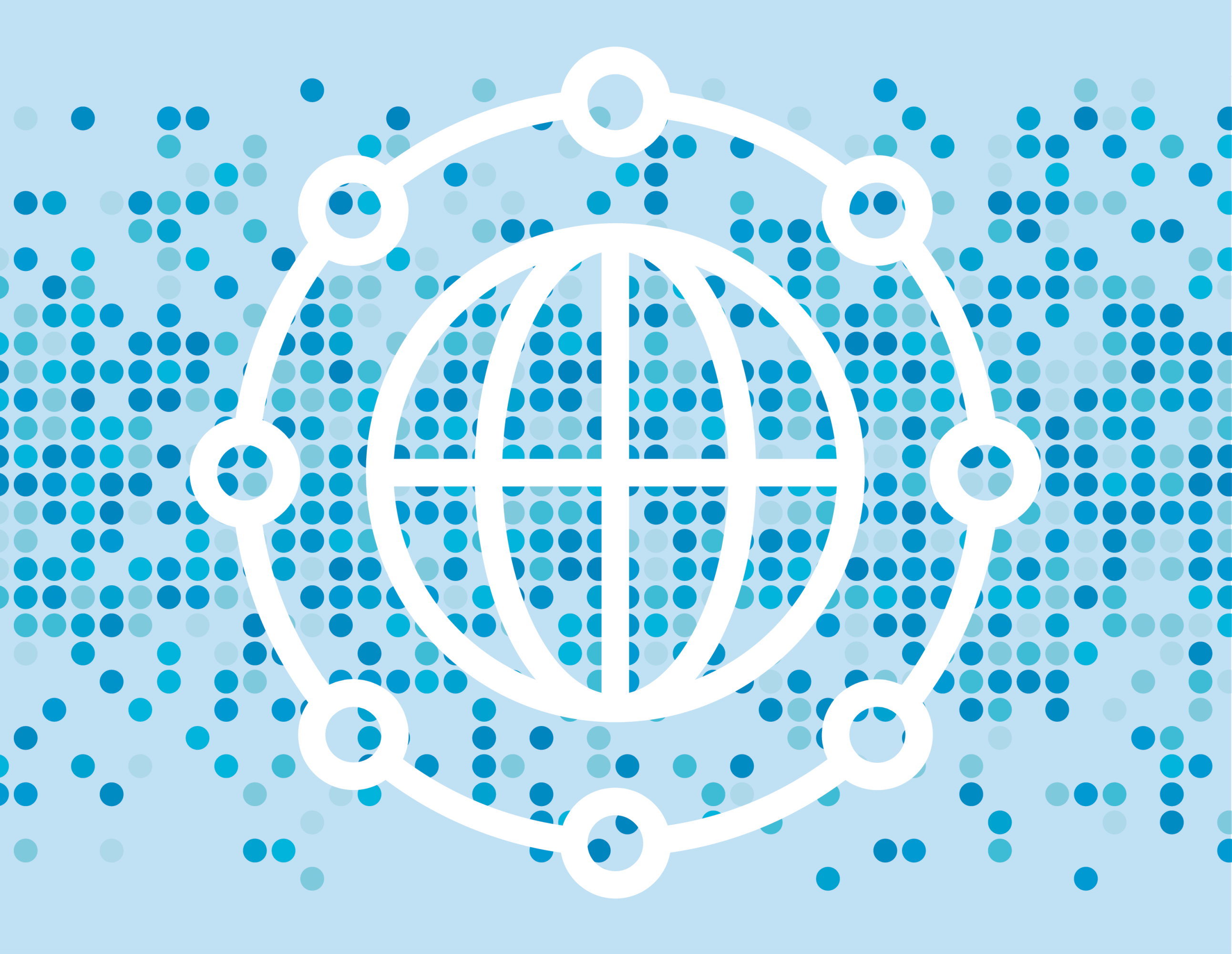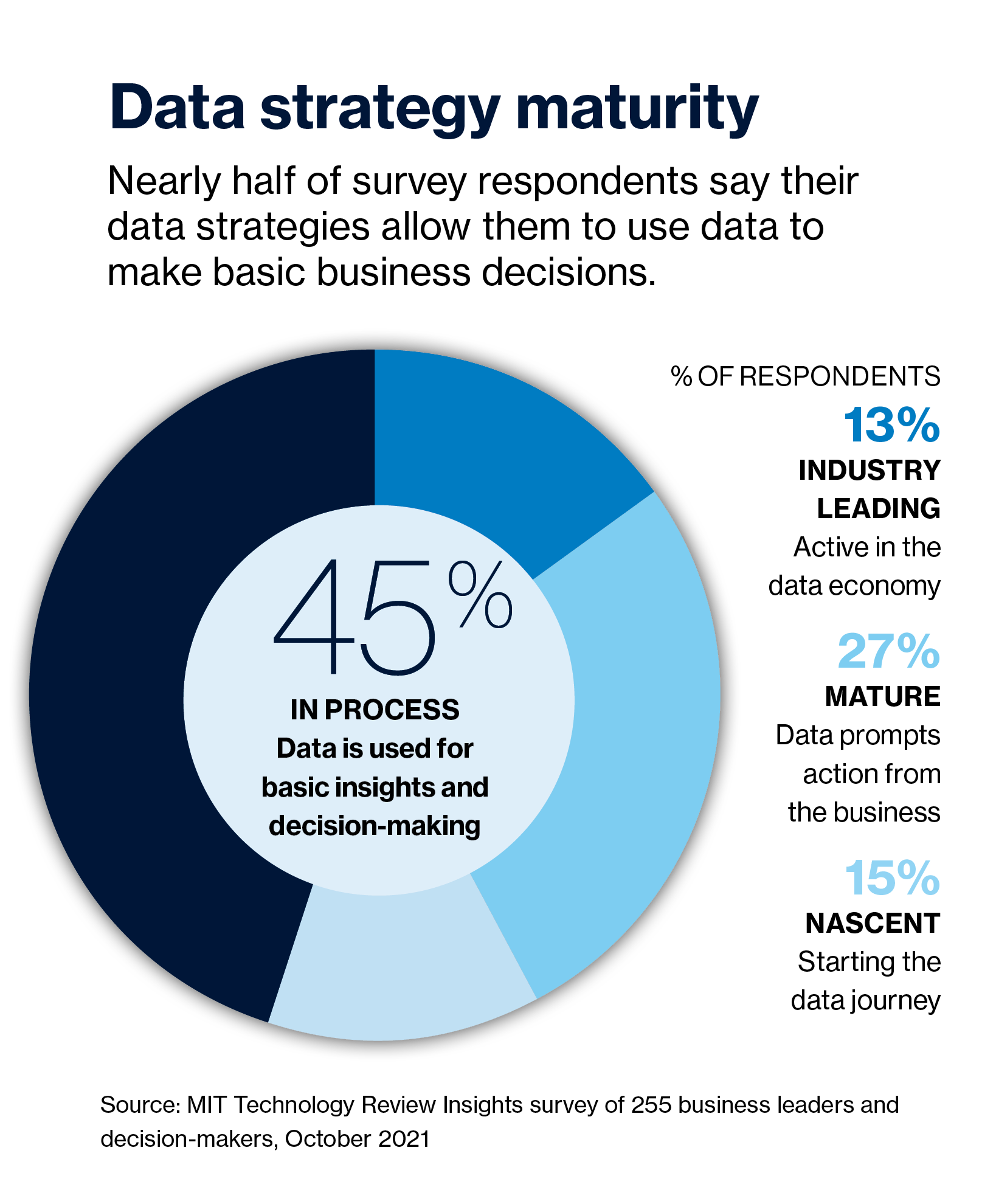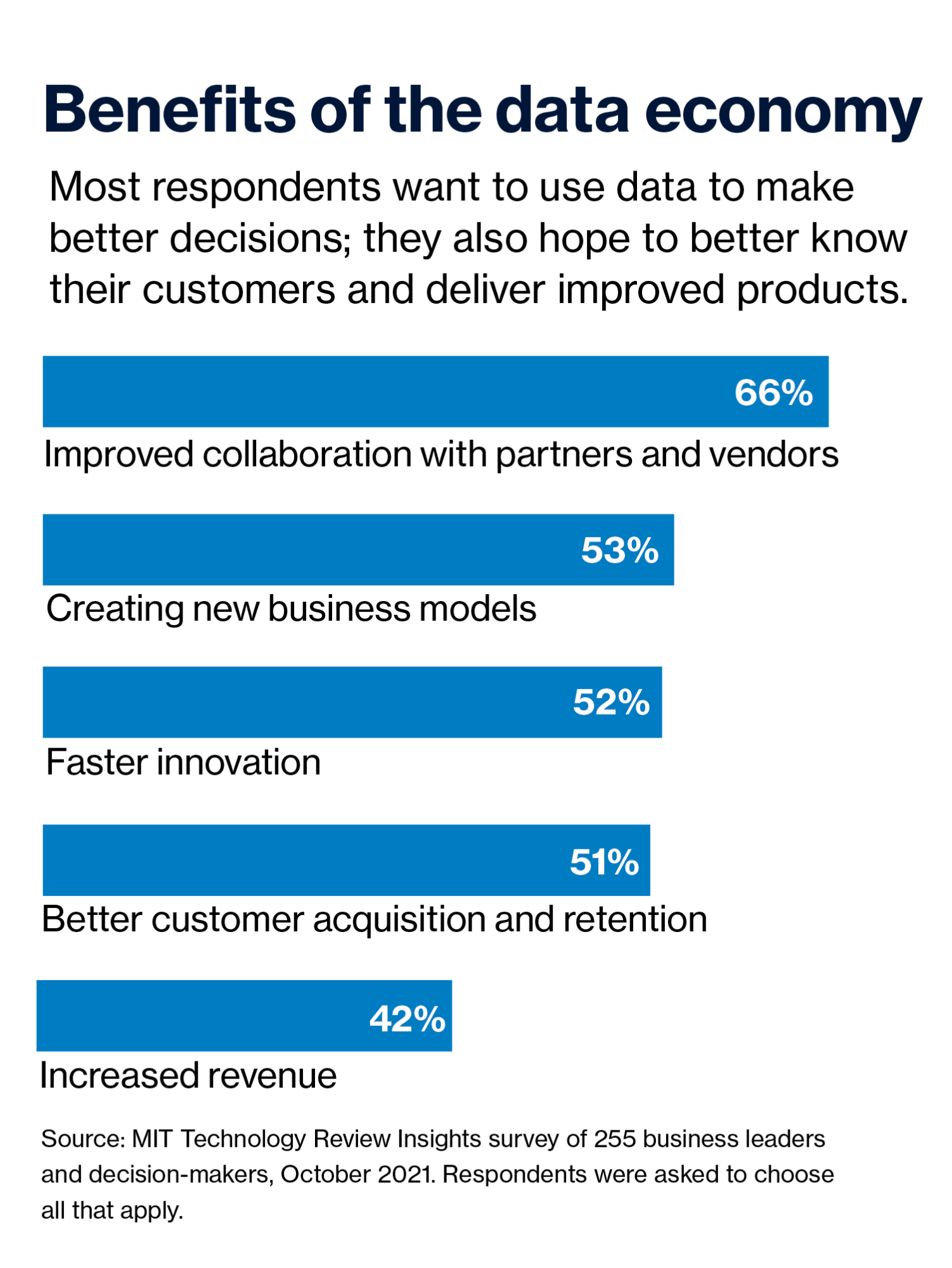Data is growing at a meteoric rate. In fact, the total amount of data generated by 2025 is set to accelerate exponentially to 175 zettabytes.1 And over the next two years, enterprise data is expected to increase at a 42% annual growth rate.

Hidden within these vast volumes of data are insights into consumer behavior, emerging market trends, even predictors of the future. For organizations, the goal is to make sense out of this rapidly increasing amount of data and find innovative ways to derive sustainable value from it, all while efficiently managing consumption of the cloud services that support data management and analysis.
Yet according to a survey of 255 business leaders and decision-makers conducted by MIT Technology Review Insights, 45% of respondents say they use data for only basic insights and decision-making. That’s a missed opportunity.
“There’s an absolute explosion of data sources both inside and outside of the enterprise,” says Channa Seneviratne, executive of technology development and solutions at Telstra, an Australian telecommunications company. “As a telco, our customer base, and the data that it generates, is a fantastic asset that we likely don’t utilize as effectively as we could.”
But that’s changing as Telstra takes advantage of today’s data economy. The data economy is the global digital ecosystem in which the producers and consumers of data—businesses and individuals—and government and municipal agencies gather, organize, and share accumulated data from a wide variety of sources. By connecting unconnected data across industry boundaries, organizations can glean richer business insights, tap into unexplored markets, serve citizens and consumers alike with data-driven products and services, and monetize their data by sharing it externally with key customers and suppliers.
The perks of participation
So how can organizations participate in the data economy? One way is by eliminating data silos that can prevent companies from gleaning compelling insights. Fortunately, more than a third (35%) of survey respondents are collaborating with partners to exchange data. This sharing of data assets is helping organizations unlock value and achieve significant business outcomes.

For instance, 66% of those sharing data assets are experiencing improved collaboration with partners and vendors. It’s easy to understand why. Data exchanges and marketplaces provide multiple stakeholders with a secure and reliable platform for gathering and sharing information in real time.
More than half (53%) of business leaders say that participating in the data economy has led them to create new business models. For example, using internet-of-things-enabled monitoring devices, Telstra delivers applications that convert waste, water, air, soil, and noise data into actionable insights. By combining this data with micro-climate data gathered from weather stations, the company plans to provide Australia’s agricultural industry with information that can be used for a range of activities, from predicting the health of crop yields to determining pesticide use. “We’re bringing together isolated pockets of data to create more value, insights, and applications,” says Seneviratne. “We’re now in a better position to monetize that data and add value.”
Telstra isn’t alone. According to Kent Graziano, chief technology evangelist at Snowflake, a data cloud provider based in Bozeman, Montana, “As the volume of data grows, many organizations are realizing that the data they have can actually be useful to other organizations, either within their own industry or in adjacent industries.”
Graziano offers the example of a medical device manufacturer. Medical devices can track and gather critical information about a patient’s blood pressure, heart rate, and insulin levels. But most manufacturers play a minimal role in influencing and shaping patient outcomes.

By partnering with health-care organizations and securely integrating tracking data with other patient and third-party data, a medical device manufacturer can establish a new business model as a provider of health-care information with a direct impact on patient well-being.
“Many organizations collect data and analyze data but it’s never been technically feasible and economically efficient for them to try to monetize that data,” says Graziano. By sharing data with key stakeholders via cloud-based platforms, such as a data exchange or marketplace, businesses can “develop a new revenue stream.”
Another benefit of the data economy is faster innovation, according to 52% of survey respondents. Traditional companies are facing unprecedented pressure from their digitally native counterparts to innovate and respond quickly to evolving customer preferences and market trends. By harnessing data from a wide variety of external sources, organizations can discover innovative approaches to designing products, delivering services—and even solving the world’s problems.
For example, credit card companies could work with health-care organizations, cell phone carriers, and e-commerce players to use their integrated data to track covid-19 patients and provide them with care in ways that would not have been possible as single entities with siloed data sets.
“In a digital economy, how does a 200-year-old enterprise innovate?” asks Sunil Senan, senior vice president and business head for data and analytics at Infosys, a digital services and consulting company, based in Bengaluru, India. “We feel that data is a big part of continuing to serve customers and finding new ways to remain relevant in a world of disruptions.”
In addition to creating new business models and driving innovation, more than half (51%) of survey respondents say participating in a data economy can improve rates of customer acquisition and retention—gaining new customers and retaining current ones—while 42% of respondents cite increased revenue as an important business benefit.
Down load the full report.
This content was produced by Insights, the custom content arm of MIT Technology Review. It was not written by MIT Technology Review’s editorial staff.
